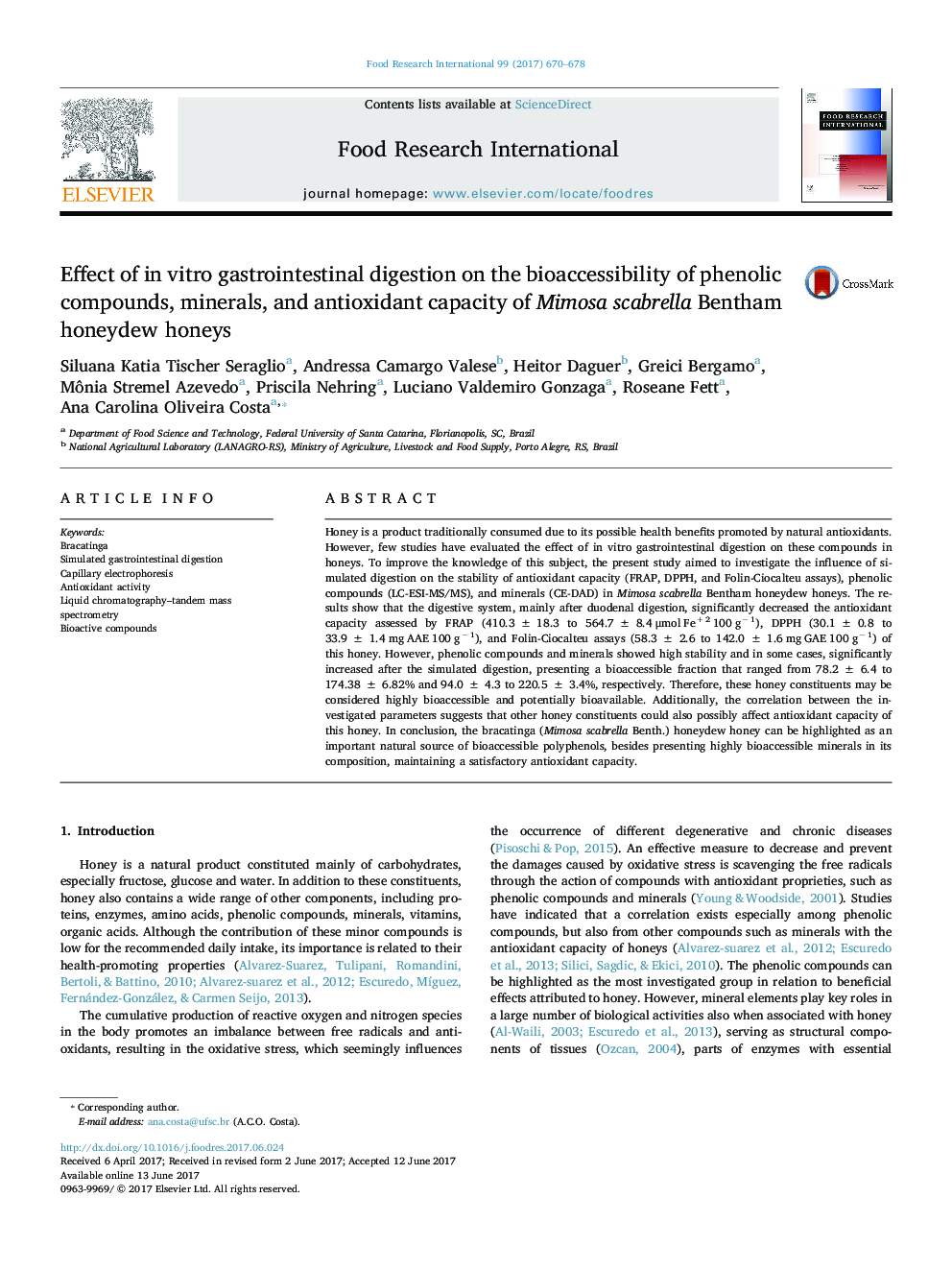| کد مقاله | کد نشریه | سال انتشار | مقاله انگلیسی | نسخه تمام متن |
|---|---|---|---|---|
| 5768143 | 1413213 | 2017 | 9 صفحه PDF | دانلود رایگان |

- Bioaccessibility of bioactive compounds in bracatinga honeydew honey was evaluated.
- Antioxidant capacity also was evaluated in honeydew honey samples.
- Phenolic compounds and minerals were highly bioaccessible after simulated digestion.
- Correlation analysis suggests that phenolic compounds and minerals also affect antioxidant capacity.
Honey is a product traditionally consumed due to its possible health benefits promoted by natural antioxidants. However, few studies have evaluated the effect of in vitro gastrointestinal digestion on these compounds in honeys. To improve the knowledge of this subject, the present study aimed to investigate the influence of simulated digestion on the stability of antioxidant capacity (FRAP, DPPH, and Folin-Ciocalteu assays), phenolic compounds (LC-ESI-MS/MS), and minerals (CE-DAD) in Mimosa scabrella Bentham honeydew honeys. The results show that the digestive system, mainly after duodenal digestion, significantly decreased the antioxidant capacity assessed by FRAP (410.3 ± 18.3 to 564.7 ± 8.4 μmol Fe+ 2 100 gâ 1), DPPH (30.1 ± 0.8 to 33.9 ± 1.4 mg AAE 100 gâ 1), and Folin-Ciocalteu assays (58.3 ± 2.6 to 142.0 ± 1.6 mg GAE 100 gâ 1) of this honey. However, phenolic compounds and minerals showed high stability and in some cases, significantly increased after the simulated digestion, presenting a bioaccessible fraction that ranged from 78.2 ± 6.4 to 174.38 ± 6.82% and 94.0 ± 4.3 to 220.5 ± 3.4%, respectively. Therefore, these honey constituents may be considered highly bioaccessible and potentially bioavailable. Additionally, the correlation between the investigated parameters suggests that other honey constituents could also possibly affect antioxidant capacity of this honey. In conclusion, the bracatinga (Mimosa scabrella Benth.) honeydew honey can be highlighted as an important natural source of bioaccessible polyphenols, besides presenting highly bioaccessible minerals in its composition, maintaining a satisfactory antioxidant capacity.
194
Journal: Food Research International - Volume 99, Part 1, September 2017, Pages 670-678